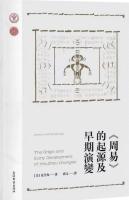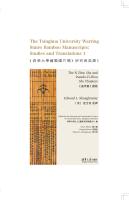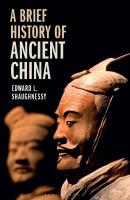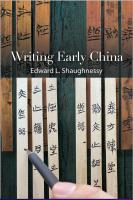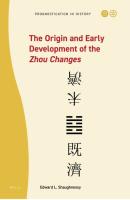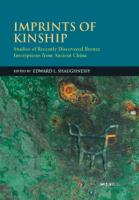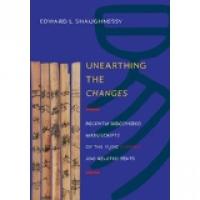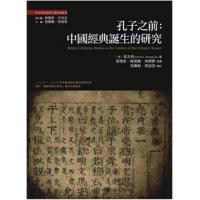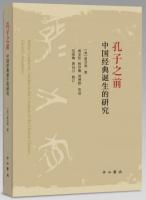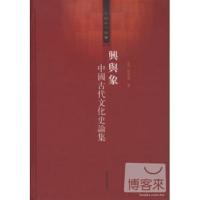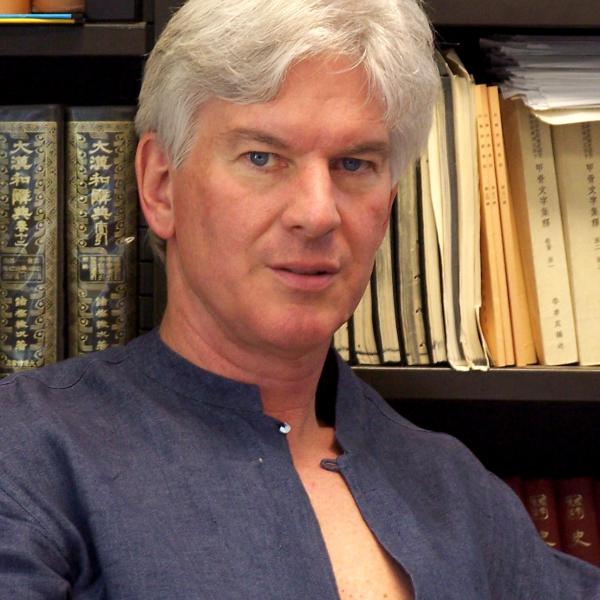
Biography
Most of my career has been devoted to the cultural and literary history of China’s Zhou dynasty (c. 1045-249 BCE), the period that has served all subsequent Chinese intellectuals as the Golden Age of Chinese civilization; after all, it is not only the period founded by the sage kings Wen (d. 1050 BCE) and Wu (r. 1045-1043 BCE), but also that during which Confucius (551-479 BCE) lived. Much of my work has focused on archaeologically recovered textual materials from this period, from inscriptions on ritual bronze vessels cast during the first centuries of the first millennium BCE through manuscripts written on bamboo and silk during the last centuries of the millennium. These manuscripts, which have been unearthed in breathtaking profusion during the last two or three decades, have come to absorb more and more of my attention. At the same time, I remain fascinated with the received literary tradition of the period, especially the three classics: Zhou Yi or Zhou Changes (Better known in the West as the I Ching or Classic of Changes), Shang shu or Exalted Scriptures (also known as the Shu jing or Classic of History) and Shi jing or Classic of Poetry. Indeed, I find it most rewarding when it proves possible to use these archaeological materials to explicate the classics, and vice versa. My final study of the Zhou Yi was published in 2022: The Origin and Early Development of the Zhou Changes (Leiden: Brill), with a Chinese translation published the following year: Zhou Yi de qiyuan yu zaoqi yanbian 周易的起源與早起演變 (Shanghai: Shanghai Guji), and my translation of the Shi jing will be published in 2025: The Classic of Poetry: Ancient China’s Songbook (Hong Kong: CUHK Press).
An important aspect of my scholarly work has been my attempt to bridge western and Chinese traditions of scholarship. To this end, I have written most of my technical scholarship in Chinese, having published seven volumes of essays in Chinese, as well as three other books devoted to specialized topics. For instance, in 2018, I published a 650-page book entitled Xiguan Han ji: Xifang Hanxue chutu wenxian yanjiu gaiyao 西觀漢記:西方漢學出土文獻研究概要 (Chinese annals in the Western observatory: An overview of Western Sinologists’ studies of Chinese excavated documents; Shanghai: Shanghai Guji), which—as the title suggests—provides an overview of western studies of Chinese paleography, including especially scholarship devoted to oracle-bone and bronze inscriptions as well as that on manuscripts written on bamboo and silk. Ironically enough, after publishing this book in Chinese, I was persuaded to produce an English translation of it, which was published in 2019 (Berlin: de Gruyter).
I am currently leading an international team of scholars to translate all of the fourth-century BCE bamboo-slip manuscripts held at Tsinghua University in Beijing, and was the author of the first two volumes (2023 and 2024) of a planned eighteen volumes. I serve as co-editor, together with colleagues at Wuhan University in China, of a journal entitled Bamboo and Silk, devoted to manuscripts from the fifth century BCE through the third century CE. I am also the editor of a three-volume series keyed to my Xiguan Han ji, which will provide Chinese translations of the most important Western scholarship on Chinese paleography.
Videos of various public lectures are available. For instance, in June, 2013, I gave a series of lectures at the College de France entitled “Unearthing the Chinese Classics” (Zhou Yi, Shang shu, Shi jing, Laozi), which are available on their website.
Also, in September, 2013, at the University of Chicago Center in Beijing I gave a lecture entitled “The Birth of China at Chicago: The University of Chicago and the Archaeology of Ancient China,” a video of which is available through UChicago News, Youtube, and iTunes U.
Selected Publications
The Classic of Poetry: Ancient China’s Songbook. Hong Kong: Chinese University of Hong Kong Press, 2025.
The Tsinghua University Warring States Bamboo Manuscripts, Volume Two: The Shang Shu and Pseudo-Shang Shu Chapters. Beijing: Tsinghua University Press, 2024.
A Brief History of Ancient China. London: Bloomsbury Publishing, 2023.
Writing Early China. Albany, NY: SUNY Press, 2023.
The Tsinghua University Warring States Bamboo Manuscripts, Volume One: The Yi Zhou Shu and Pseudo-Yi Zhou Shu Chapters. Beijing: Tsinghua University Press, 2023.
The Origin and Early Development of the Zhou Changes. Leiden: Brill, 2022.
Gu shi xin sheng: Jianqiao Zhongguo shanggu shi bianji guozheng yu duzhe fanying 古史新聲:劍橋中國上古史編輯過程與讀者反應 (New Sounds of Ancient History: The Editorial Background and Readers Reaction to The Cambridge History of Ancient China). Beijing: Sanlian yinshuguan, 2020.
Sandai sunyi ji: Xia Shang Zhou wenhua shi yanjiu 三代損益記:夏商周文化史研究 (Records of Loss and Gain in the Three Dynasties: Studies of Xia, Shang and Zhou cultural history). Shanghai: Shanghai Guji chubanshe, 2020.
Xiguan Han ji: Xifang Hanxue chutu wenxian yanjiu gaiyao 西觀漢記:西方漢學出土文獻研究概要 (Chinese annals in the Western observatory: An overview of Western Sinologists’ studies of Chinese excavated documents). Shanghai: Shanghai Guji chubanshe, 2018. English translation: Chinese Annals in the Western Observatory: An Overview of Western Sinologists’ Studies of Chinese Excavated Documents, Jao Tsung-i Academy of Sinology Monograph (Berlin: De Gruyter, 2019).
Imprints of Kinship: Studies of Recently Discovered Bronze Inscriptions from Ancient China, editor. Hong Kong: Chinese University of Hong Kong Press, 2017.
Haiwai Yijianzhi: Gu shi yi guan er ji 海外夷堅志:古史異觀二集 (Firm-and-Even’s Records from Beyond the Seas: The Second Collection of a A different View of Ancient History). Shanghai: Shanghai Guji chubanshe, 2016.
Unearthing the Changes: Recently Discovered Manuscripts of and Relating to the Yi Jing. New York: Columbia University Press, 2014.
Xing yu xiang: Zhongguo gudai wenhua shi lunwenji 興與象:中國古代文化史論文集 (Arousals and Images: Essays on Ancient Chinese Cultural History). Shanghai: Shanghai Guji chubanshe, 2012.
Courses
- The Ji Zhong Discovery (2025-26)
- The Development of Early China Studies in the West (2025-26)
- Western Zhou Bronze Inscriptions (2025)
- The Shang shu (2024)
- The Shi jing (2024)

